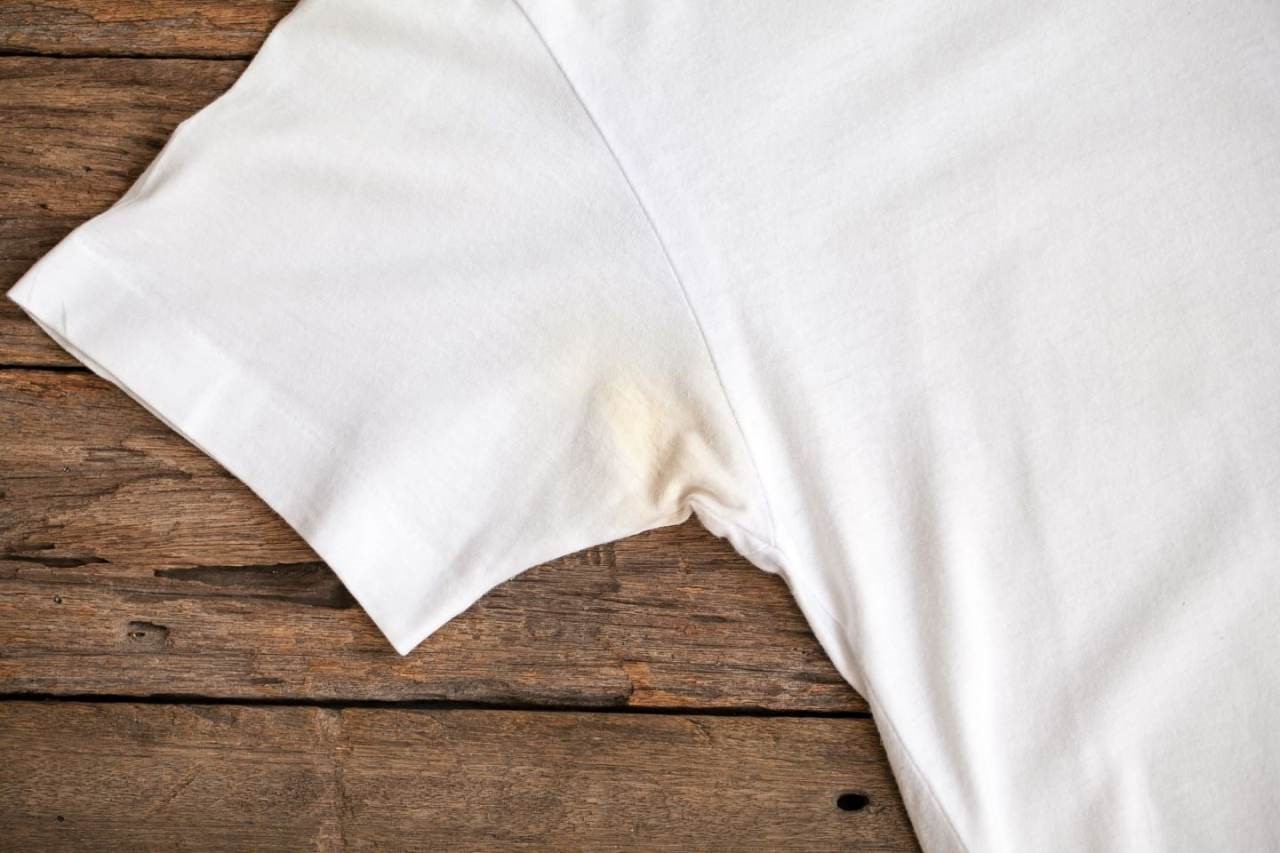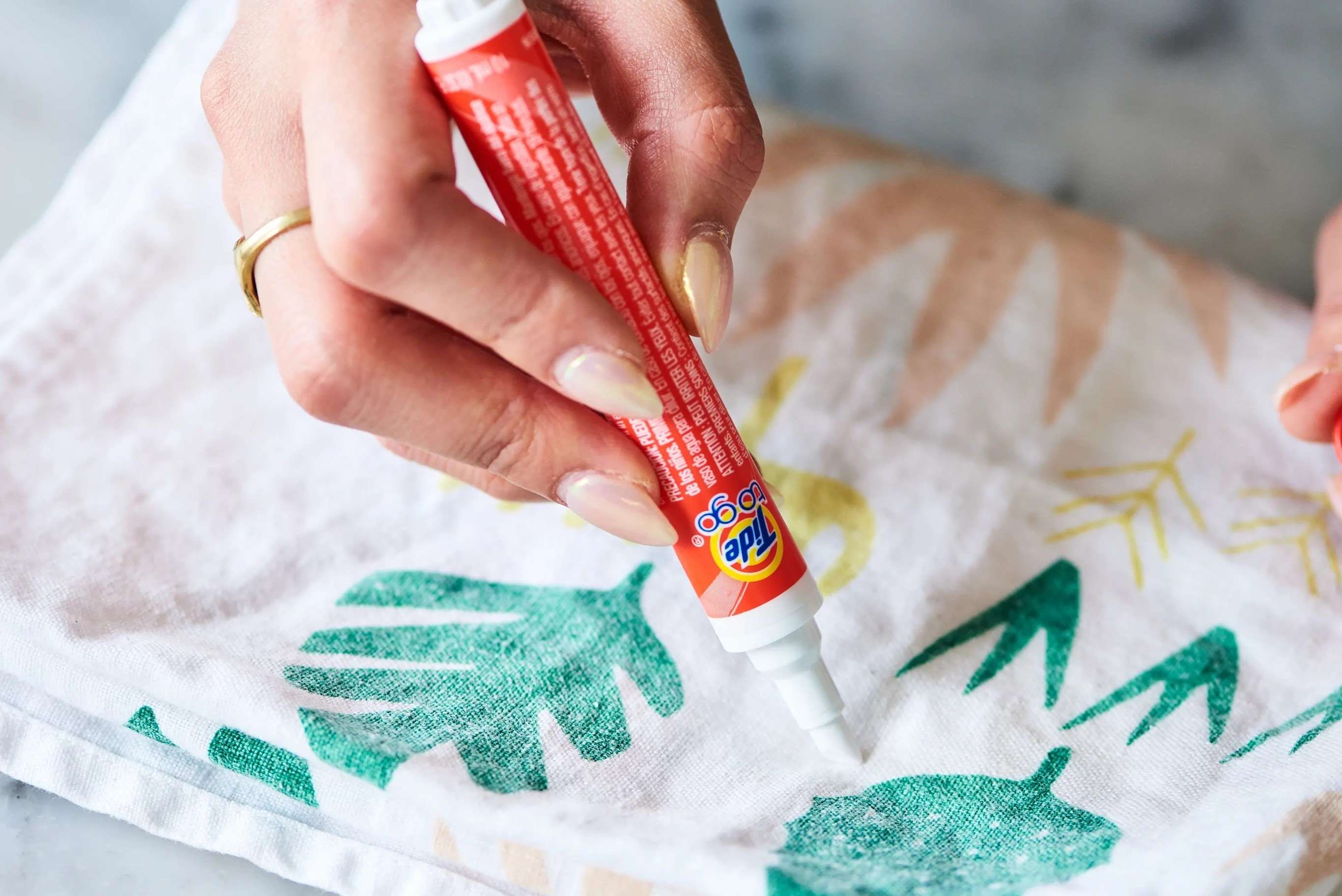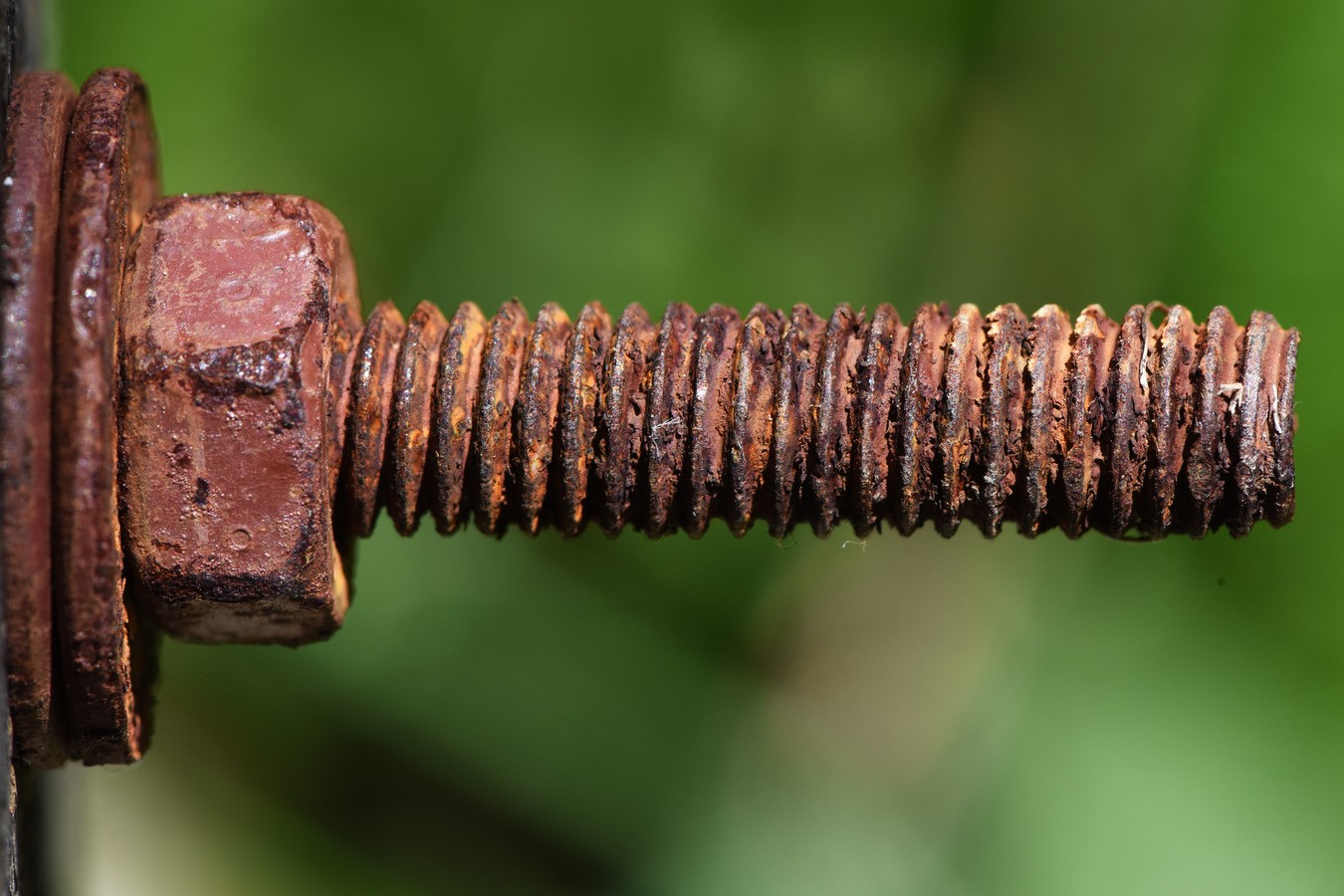Home>Home and Garden>How To Remove Deodorant Stains


Home and Garden
How To Remove Deodorant Stains
Published: March 6, 2024
Learn effective ways to remove deodorant stains from clothes and fabrics at home. Discover simple home and garden solutions to keep your garments looking fresh and clean.
(Many of the links in this article redirect to a specific reviewed product. Your purchase of these products through affiliate links helps to generate commission for Noodls.com, at no extra cost. Learn more)
Table of Contents
Introduction
Deodorant stains can be a frustrating and persistent issue for many individuals. Whether it's the telltale white streaks on your favorite black shirt or the stubborn yellow marks on your crisp white blouse, dealing with deodorant stains can be a real hassle. However, with the right knowledge and techniques, you can effectively tackle and prevent these pesky stains.
In this comprehensive guide, we will delve into the world of deodorant stains, exploring the science behind these blemishes and providing practical solutions for removing them from clothing and fabrics. Additionally, we will discuss methods for removing deodorant stains from the skin and offer valuable tips for preventing these stains in the first place.
By the end of this article, you will be equipped with the knowledge and strategies to bid farewell to deodorant stains and keep your clothing and skin looking fresh and clean. So, let's roll up our sleeves and embark on a journey to conquer deodorant stains once and for all!
Read more: How To Remove Bleach Stains
Understanding Deodorant Stains
Deodorant stains are a common nuisance that can tarnish the appearance of clothing and fabrics. These stains typically manifest as white or yellow marks, often concentrated in the underarm area of garments. Understanding the composition of deodorant and its interaction with sweat is crucial in comprehending the formation of these stubborn stains.
The primary culprits behind deodorant stains are the ingredients found in most antiperspirants and deodorants. Aluminum compounds, which are commonly used to block sweat ducts and reduce perspiration, can react with the salts present in sweat. This chemical reaction can result in the formation of unsightly stains on clothing, particularly when the affected garments are exposed to heat during laundering or ironing.
Moreover, the pH levels of deodorants and antiperspirants can contribute to the discoloration of fabrics. The alkaline nature of these products, designed to neutralize the acidity of sweat and inhibit the growth of odor-causing bacteria, can lead to visible stains when they come into contact with sweat and residual skin oils.
Understanding the science behind deodorant stains empowers individuals to adopt targeted strategies for their removal. By recognizing the chemical processes at play, it becomes evident that pre-treating affected areas and utilizing specialized stain removal techniques are essential for effectively combating these blemishes.
In the subsequent sections, we will explore pre-treating methods and tailored approaches for removing deodorant stains from various fabrics, as well as practical tips for preventing their occurrence. Armed with this knowledge, you will be well-equipped to tackle deodorant stains with confidence and restore your clothing to its pristine condition.
Pre-Treating Deodorant Stains
Pre-treating deodorant stains is a crucial initial step in the battle against these stubborn blemishes. By addressing the stains promptly and employing targeted pre-treatment methods, you can significantly enhance the effectiveness of subsequent stain removal efforts.
One effective pre-treatment method involves using a liquid laundry detergent or a specialized stain remover. Before laundering the affected garment, apply a small amount of the detergent or stain remover directly onto the stained area. Gently rub the product into the fabric, ensuring that it penetrates the fibers and reaches the core of the stain. Allow the pre-treatment solution to sit on the fabric for at least 10-15 minutes to facilitate the breakdown of the deodorant residue.
For particularly stubborn or set-in deodorant stains, creating a paste using equal parts of baking soda and water can serve as a potent pre-treatment solution. Apply the paste to the stained area, gently massaging it into the fabric. The alkaline nature of baking soda aids in neutralizing the acidic components of the deodorant, thereby loosening the stain from the fabric fibers.
Another effective pre-treatment approach involves utilizing distilled white vinegar. This versatile household ingredient can be applied directly to deodorant stains to help dissolve and lift the residue. Simply saturate the stained area with white vinegar, allowing it to soak for approximately 15-20 minutes before proceeding with the laundering process.
It's important to note that pre-treating deodorant stains should be followed by thorough rinsing to remove the pre-treatment solution and loosened residue before laundering the garment. Additionally, always refer to the care label of the affected garment to ensure compatibility with the chosen pre-treatment method.
By diligently pre-treating deodorant stains using these targeted methods, you can effectively prepare the affected garments for the subsequent stain removal process. This proactive approach sets the stage for successful stain removal, allowing you to restore your clothing to its pristine condition and bid farewell to unsightly deodorant marks.
Removing Deodorant Stains from Clothing
Dealing with deodorant stains on clothing can be a frustrating experience, but with the right techniques, you can effectively restore your garments to their original, stain-free state. Whether the stains are fresh or have set in over time, prompt action and targeted methods can make a significant difference in the removal process.
One of the most effective approaches for removing deodorant stains from clothing involves the use of common household items such as white vinegar, baking soda, and liquid laundry detergent. These versatile ingredients can be utilized to pre-treat the stained areas and facilitate the subsequent removal of the stubborn marks.
After pre-treating the affected areas using the methods outlined in the previous section, it's essential to launder the garments according to the care label instructions. When washing the stained items, opt for the hottest water temperature that is safe for the fabric to help break down and lift the deodorant residue. Additionally, consider using a laundry detergent that is specifically formulated to target tough stains, ensuring thorough cleansing and stain removal.
For particularly stubborn deodorant stains, incorporating oxygen-based bleach into the laundering process can yield remarkable results. Oxygen-based bleach, such as hydrogen peroxide or sodium percarbonate, is renowned for its potent stain-fighting properties and can be added to the wash cycle to aid in lifting and dissolving the residual marks.
Once the garments have been laundered, inspect the previously stained areas to ensure that the deodorant marks have been effectively removed. If any traces of the stains persist, refrain from drying the items in the dryer, as the heat can set the stains further. Instead, repeat the pre-treatment and laundering process to continue targeting the remaining marks until the garments are restored to their pristine condition.
By diligently following these tailored methods for removing deodorant stains from clothing, you can effectively combat these blemishes and rejuvenate your garments. With patience and targeted stain removal techniques, you can bid farewell to unsightly deodorant marks and preserve the appearance of your clothing.
Remember, prompt action and the use of appropriate pre-treatment solutions, coupled with thorough laundering and targeted stain removal methods, are key to successfully removing deodorant stains from clothing. With these strategies at your disposal, you can confidently tackle deodorant stains and restore your clothing to its original, stain-free state.
Removing Deodorant Stains from Different Fabrics
When it comes to removing deodorant stains from various fabrics, it's essential to tailor the stain removal approach to the specific characteristics and care requirements of each fabric type. Different fabrics, ranging from delicate silk and wool to sturdy cotton and polyester, demand specialized treatment to effectively combat deodorant stains without compromising their integrity.
Read more: How To Remove Grass Stains
Cotton and Polyester
Cotton and polyester are durable and commonly found in a wide range of clothing items. To remove deodorant stains from these fabrics, pre-treating the affected areas with a liquid laundry detergent or a specialized stain remover is an effective initial step. After pre-treatment, launder the garments in the hottest water temperature suitable for the fabric, using a laundry detergent formulated for tough stains. For stubborn stains, incorporating oxygen-based bleach into the wash cycle can aid in lifting the residual marks.
Silk and Wool
Silk and wool are delicate fabrics that require gentle care to preserve their texture and appearance. When dealing with deodorant stains on silk and wool garments, it's crucial to avoid using harsh chemicals or vigorous scrubbing that could damage the fibers. Instead, pre-treat the stains with a mild detergent or a specialized silk and wool stain remover, gently massaging the product into the affected areas. Launder the garments using cold water and a gentle cycle to prevent damage to the delicate fibers.
Linen and Rayon
Linen and rayon fabrics necessitate careful attention when removing deodorant stains to avoid discoloration or fiber damage. Pre-treating the stains with a gentle liquid detergent or a specialized stain remover is recommended. Launder the garments using cool to lukewarm water and a mild detergent, adhering to the care label instructions to ensure proper maintenance of the fabrics.
Blended Fabrics
Blended fabrics, such as polyester-cotton blends or wool-synthetic blends, require a balanced approach when removing deodorant stains. Pre-treat the stains with a suitable detergent or stain remover, considering the care requirements of the specific fabric blend. Launder the garments according to the care label instructions, utilizing the appropriate water temperature and laundering settings to effectively combat the stains without compromising the integrity of the blended fabrics.
By tailoring the stain removal approach to the unique characteristics of each fabric type, you can effectively combat deodorant stains without causing damage or discoloration. Remember to always refer to the care label instructions and test any pre-treatment solutions on a small, inconspicuous area of the fabric to ensure compatibility and prevent adverse effects. With these targeted methods, you can confidently remove deodorant stains from a variety of fabrics and preserve the pristine appearance of your garments.
Read more: How To Remove Turmeric Stains
Removing Deodorant Stains from Skin
Dealing with deodorant stains on the skin can be an unsightly and uncomfortable experience. Whether it's the result of accidental contact during application or residual buildup from previous use, removing deodorant stains from the skin requires gentle yet effective methods to restore a clean and natural appearance.
One of the most straightforward approaches for removing deodorant stains from the skin involves using mild soap and water. When confronted with fresh deodorant marks, promptly rinsing the affected areas with lukewarm water and gently lathering with a mild soap can help lift the residue and restore the skin's natural appearance. It's important to avoid using harsh scrubbing motions, as this can irritate the skin and exacerbate the staining.
For stubborn or set-in deodorant stains, incorporating the use of a gentle exfoliating scrub can aid in loosening the residue and facilitating its removal. Opt for a mild exfoliant formulated for sensitive skin, and gently massage the product onto the stained areas in circular motions. This gentle exfoliation can help lift the residual deodorant marks without causing irritation or damage to the skin.
In cases where the deodorant stains persist despite initial cleansing efforts, applying a small amount of diluted white vinegar to the affected areas can serve as an effective stain-removal solution. The mild acidic properties of white vinegar can help dissolve the deodorant residue, allowing for easier removal from the skin. After applying the diluted white vinegar, rinse the skin thoroughly with water to remove any residual vinegar and loosened residue.
It's important to note that when removing deodorant stains from the skin, it's crucial to prioritize the gentle and sensitive nature of the skin to prevent irritation or discomfort. Avoid using harsh chemicals or abrasive scrubbing tools, as these can damage the skin and exacerbate the staining. Instead, opt for gentle and natural solutions that respect the skin's delicate balance while effectively addressing the stains.
By employing these gentle yet effective methods for removing deodorant stains from the skin, you can restore a clean and natural appearance without compromising the skin's health and integrity. With patience and targeted care, you can effectively combat deodorant stains on the skin and maintain a fresh and blemish-free complexion.
Preventing Deodorant Stains
Preventing deodorant stains is a proactive and essential aspect of maintaining the pristine condition of your clothing and fabrics. By adopting simple yet effective strategies, you can minimize the occurrence of deodorant stains and preserve the appearance of your garments. Here are valuable tips to help you prevent deodorant stains and keep your clothing looking fresh and clean:
-
Allow Deodorant to Dry Completely: After applying deodorant, allow it to dry completely before dressing to minimize the risk of transfer onto clothing. Taking a few extra minutes to ensure that the deodorant has dried can significantly reduce the likelihood of stains.
-
Choose Antiperspirants Wisely: Opt for antiperspirants and deodorants that are formulated to leave minimal residue. Look for products that are marketed as "invisible" or "stain-free" to minimize the potential for visible marks on clothing.
-
Apply Deodorant Carefully: When applying deodorant, take care to avoid excessive or uneven application, as this can lead to a buildup of residue on clothing. Applying a thin, even layer of deodorant can help minimize the risk of stains.
-
Allow Deodorant to Absorb: After applying deodorant, allow it to fully absorb into the skin before dressing. This can help reduce the likelihood of transfer onto clothing and minimize the potential for stains.
-
Wash Clothing Promptly: Launder clothing promptly after wear to prevent deodorant residue from setting into the fabric. Prompt washing can help remove any residual deodorant and sweat, reducing the risk of stains.
-
Test New Products: When trying a new deodorant or antiperspirant, test it on a small, inconspicuous area of clothing to ensure that it does not leave visible marks. This can help you identify any potential staining issues before widespread use.
-
Follow Care Label Instructions: Adhere to the care label instructions on your clothing to ensure proper laundering and maintenance. Following the recommended washing and drying guidelines can help preserve the integrity of the fabric and minimize the risk of deodorant stains.
By incorporating these preventive measures into your daily routine, you can effectively minimize the occurrence of deodorant stains and preserve the pristine condition of your clothing and fabrics. With a proactive approach and mindful application of deodorant, you can enjoy fresh, stain-free garments and confidently tackle the challenges of deodorant stains.













